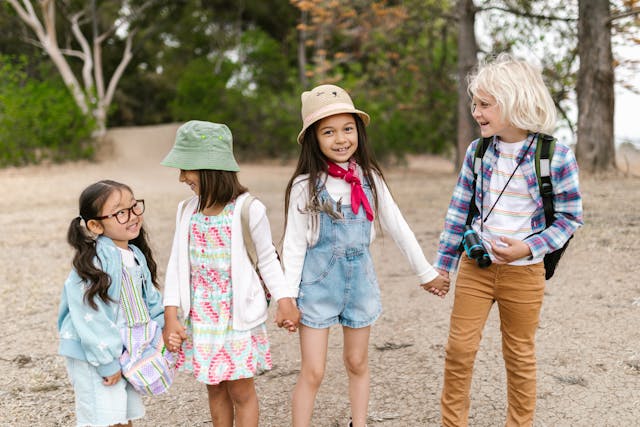Let’s be honest—sitting in a classroom all day isn’t always the easiest way to learn. It can feel slow, repetitive, and sometimes kind of pointless. But when learning happens in a way that doesn’t feel like school—when it’s active, hands-on, and actually interesting—it sticks way better.
Some of the best learning happens outside the usual classroom setup. That could mean going on a school trip, doing a science experiment, building something from scratch, or even talking to someone who works in a field you’ve only read about. These kinds of experiences don’t just teach facts—they help you understand them.
Why Learning Outside the Classroom Just Works
Learning doesn’t have to be tied to a desk or a whiteboard. In fact, getting out of that setting can help students focus more. When you’re in a new place or doing something different, your brain pays attention in a whole new way.
Take school trips, for example. Visiting a place you’ve studied—like a historical site or a science museum—makes everything more real. You’re seeing it, hearing it, walking through it. That’s the kind of thing that sticks with you long after the trip ends.
That’s also why a lot of schools are choosing to organize expert-led school trips. These aren’t your regular field trips. They’re planned and led by people who actually know the subject deeply—scientists, historians, local experts—and can explain things in a way that’s easy to understand and fun to learn. It’s not about memorizing facts. It’s about being curious, asking questions, and making real-world connections.

What Makes Expert-Led Trips So Different
When someone who’s truly passionate about a subject is leading the way, it shows. Expert guides don’t just read from a script—they know the answers to unexpected questions, they tell interesting stories, and they actually care that you’re learning something meaningful.
They also know how to make complicated ideas feel simple. A teacher might explain something in class, but an expert who works in that field every day can give real-life examples that make it all click.
And these trips aren’t random or off-topic. They’re designed to connect directly to what students are already learning in school. Whether it’s history, science, geography, or language, expert-led trips make those subjects come to life.
Learning by Doing Is Just Better
Not everything has to be a trip. There are so many ways to make learning more active and less boring. Building things, solving problems, running group projects—anything that gets students involved usually works better than a long lecture.
When students get to work with their hands, try new things, or figure something out on their own, they’re more likely to remember it. They’re also more likely to care about it.
Group work (when it’s done well) can be great too. It teaches how to share ideas, manage time, and work together to reach a goal. And when students can see how what they’re doing connects to real life, the work feels more important.
Guest speakers are another cool way to bring the outside world in. When someone with real experience comes in and shares their story, it can be way more powerful than just reading about it.
Moving Around Helps, Too
Let’s face it—no one wants to sit still all day. Being stuck at a desk can make even the most interesting lesson feel boring. But when learning involves moving—going outside, exploring a museum, or doing a walking tour—it changes the vibe completely.
Even short breaks outside or chances to switch seats can help students stay alert. The point is, movement matters. It keeps the brain awake and helps with focus, creativity, and even memory.
Some students think better when they’re on their feet. Just the act of standing up to write on a whiteboard or talking while walking can help make ideas flow faster.
What Schools Can Do to Make Learning Feel Real
You don’t need a big budget or fancy tech to make learning more exciting. Small changes make a big difference. Turning a lesson into a game, turning a history topic into a debate, or letting students research topics they care about—all of these can help.
Letting students make choices also goes a long way. When students have a say in how they learn, they’re more likely to stay interested. That could mean choosing a project topic, picking how to present their work, or deciding what questions to explore.
Schools can also connect more with the outside world. Community projects, real-life case studies, or even local tours can make learning feel less like school and more like something that matters.
When Learning Feels Natural
The best kind of learning doesn’t feel forced. It just happens, without trying too hard. That’s what makes hands-on projects, trips, and expert-led activities so powerful. They turn information into something you can see, hear, and remember.
When students are part of the learning process—asking questions, exploring ideas, trying things out—it becomes way more personal. They’re not just doing it for a grade. They’re doing it because they’re actually curious.
That’s the goal. School shouldn’t always feel like a chore. Sometimes, the most important lessons are the ones that happen when learning doesn’t even feel like school at all.

